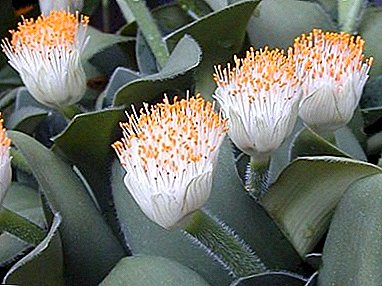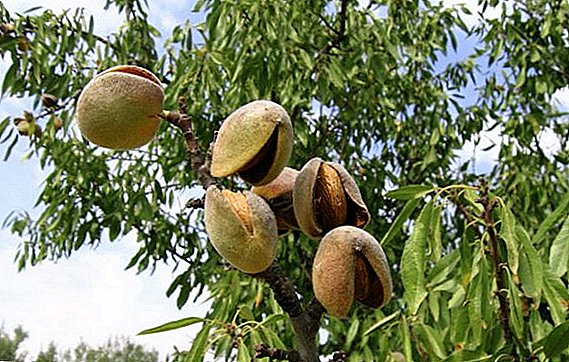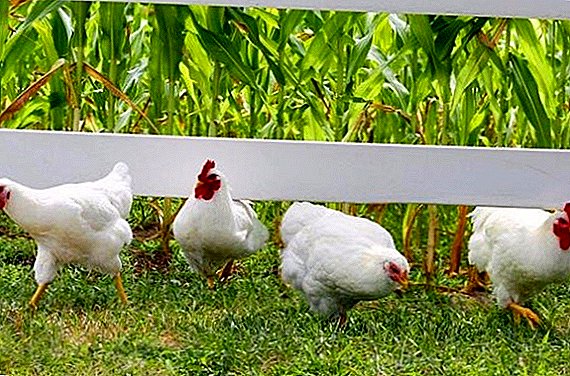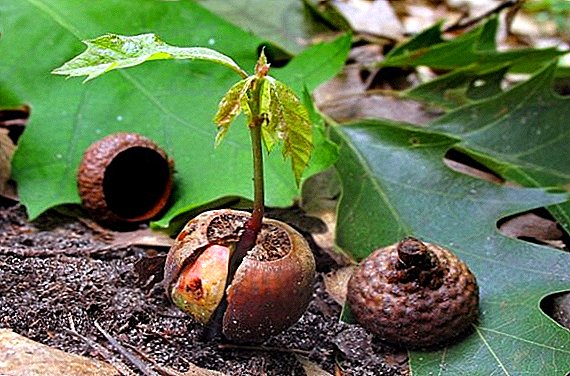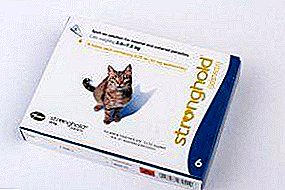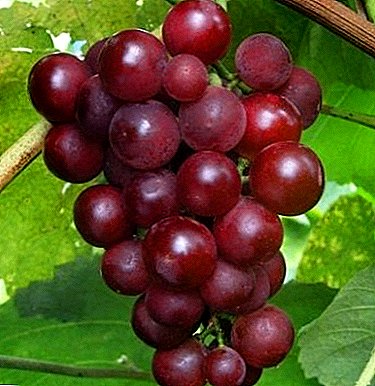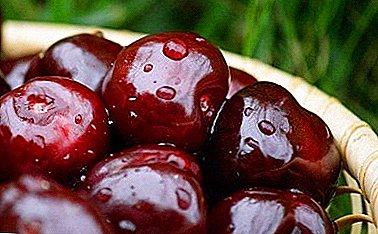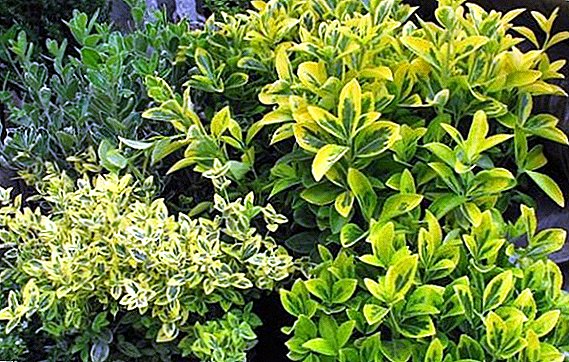 Recently it has become popular to grow ornamental shrubs at home. They are grown to form ordinary potted plants using bonsai. Today we will talk about Japanese shrub, about planting at home and caring for this plant.
Recently it has become popular to grow ornamental shrubs at home. They are grown to form ordinary potted plants using bonsai. Today we will talk about Japanese shrub, about planting at home and caring for this plant.
Biological features
The Japanese spruce variety is a shrub, an evergreen with dense fleshy leaves. Their color varies depending on the variety.
May be bright green without blotches, with white or yellowish stains or edging around the edge of the sheet.
The most popular evergreens include: boxwood, pine, thuja, fir, cypress, spruce, yew.
At home, euonymus japonicus grows to a meter in height, and develops throughout the year with proper care, dying out for a period of rest in winter. Usually in late June and early July, blooms. Inflorescences are lush, umbrella-like, consisting of small flowers of greenish-yellow, white and red shades. In September, there are fruit-boxes.
Important! Euonymus fruits are dangerous to animals and humans. If the house has livestock or small children, the plant should be placed at a height inaccessible to them. After eating berries in small quantities, an upset stomach, an accelerated heart rate, and general weakness are possible. For death, about 35 fruits are enough.
Popular varieties
Psevdolavr. Evergreen compact bush, with a lot of strong, erect stems. The leaves are wide, oval, with a rough yellowish border on the edge or interspersed with white and yellow, the main shade of the sheet is rich green, glossy.
Flowers are most often white. The plant is capricious to the conditions of detention, afraid of temperature changes.  Dwarf euonymus. Plant with small, narrow, elongated in length up to 4 cm leaves. The leaf plate is bright on top, juicy-green, on the underside is gray-green, pale.
Dwarf euonymus. Plant with small, narrow, elongated in length up to 4 cm leaves. The leaf plate is bright on top, juicy-green, on the underside is gray-green, pale.
The edges of the leaves are slightly wrapped down. Blooms with small red flowers, usually collected in inflorescences in the form of an umbrella, less often - single.  Euonymus Japanese microfilus - This is a decorative shrub with a variegated foliage. Yellow spots of irregular shape are scattered around on a green background. It blossoms with white loose inflorescences, when blossoming, becomes covered with bright boxes of fruits.
Euonymus Japanese microfilus - This is a decorative shrub with a variegated foliage. Yellow spots of irregular shape are scattered around on a green background. It blossoms with white loose inflorescences, when blossoming, becomes covered with bright boxes of fruits. 
Learn how to choose an euonymus for the garden.Aureomarginate. The variety has a decorative shape and color of leaves: an ellipse shape, elongated in length, the edges of the plate are finely toothed, the fleshy leaves are yellow-green.
During flowering is covered with green-yellow small, but lush inflorescences, fruiting bright orange or pinkish boxes. 
What to look for when buying
The first rule of purchase: It is necessary to acquire planting material in a nursery or flower shop, when buying from hands or on the market there is a chance to purchase low-quality seedlings or just a similar plant.
The second rule: it is preferable to take a plant with closed roots - this will allow you not to hurry with a transplant, give the plant time to adapt to the conditions of the room where it will be kept. When buying with an open root system, you need to immediately start planting.  Rule Three: inspect the shrub, stalks and leaves should look healthy, free from stains, dryness and damage. If the roots are open, they should not be dry and soft.
Rule Three: inspect the shrub, stalks and leaves should look healthy, free from stains, dryness and damage. If the roots are open, they should not be dry and soft.
Did you know? In its natural environment, the shrub forms dense thickets in which wolves like to lair, especially during the period of the appearance of offspring. Therefore, our ancestors called the wild bushes "wolf's bitten" or "privet" by association with a lone wolf.
Care and conditions for growing in the house
At home, the euonymus needs proper care, sudden changes in temperature or drafts, dry air or, on the contrary, excessive humidity will cause the plant to drop foliage.
Lighting
It is better to keep home shrubs on or near the windowsill of the southern windows, the plant develops well with good lighting.
For varieties of variegated shades, direct light is better suited, an euonymus with a uniform color feels fine and with ambient lighting. Do not forget that direct sunlight can burn the foliage.
In winter, you need to take care of additional lighting, to preserve the decorative foliage lighting should be at least 12 hours a day. 
Temperature
In summer, the best conditions for keeping will be placing a flower on the air: a balcony or a veranda, but there should be no draft. Temperature conditions in summer and spring days from +18 to 23 ° С.
In winter, the plant rests, it needs a cool + -10-12 ° C. You can put it on the balcony, if the temperature matches, or on the glazed veranda. In principle, the pot is not afraid of lowering to + 5.
Important! In no case do not put a pot with euonymus near the heating devices.
Watering
Drinking Japanese shrubs loves a lot, make sure that the surface of the soil is always a little wet. Water as needed, as soon as the ground has dried, moderately to prevent stagnation at the roots.
Do not use chlorinated pipe water for irrigation. As an option: thawed, rain or filtered (settled) water at room temperature.
In the intense heat it does not interfere with a light shower, be sure to clean the foliage from the dust. During the rest period, watering is reduced if the plant is in a cool place, it is practically not watered, only wipe the leaves with a slightly damp cloth.  If this is not possible and the plant is warm, watering is needed, as well as spraying, but not often.
If this is not possible and the plant is warm, watering is needed, as well as spraying, but not often.
In spring and summer, complex fertilizers for ornamental plants are added to irrigation water once every three weeks. In winter, food is not needed.
Air humidity
In the summer season you need to provide the bush with a slightly increased air humidity; decorative fountains or a pallet with a wet filling will do just fine.
Spray the leaves and the air around, the fleshy leaves of euonymus absorb moisture well. In winter, when the room is cold, spraying is not necessary.
Pruning
The procedure of pruning plant tolerates without whims. The shape of the crown can be given any, if desired. For the formation of the tree should be cut side shoots, exposing the lower part of the central trunk.
Pinching shoots will provide an incentive for the growth of new branches and will form a dense and lush crown plant.
Rejuvenating pruning involves the removal of old branches that grow thickly or drowning the growth of young twigs. If there are weak or damaged stems, they should be removed, as well as too long shoots. 
Important! Pruning the shrub is desirable to carry out, protecting the hands with gloves, if the skin got the juice, you need to rinse thoroughly with clean water.
When and how to transfer
Euonymus Japanese room easier to adapt after transplanting in adulthood. It is advisable not to touch the bush, which is not three years old. In the future, the procedure is necessary as it grows, every three to four years.
The soil is prepared from a mixture of peat, sand and sod land in equal parts. It is advisable to select a pot that is not deep, but larger in diameter, since the root system of the euonymus is superficial. It is better if the container is made of natural material, for example, from ceramics.
Transplant technology:
- Perform decontamination of the pot, drainage material and soil (pour boiling water over the pot, ignite the soil and drain).
- Lay a drainage layer about three centimeters, on top of a hill of soil.
- Carefully remove the plant from the old pot, try to save a clod of earth.
- Inspect the root processes, remove damaged or soft roots.
- On a moistened hill of soil in a new pot, place the bush and gradually fill it with a new mixture of soil.
To land evenly settled without leaving a hollow space, the pot should be shaken. At the end of the procedure, pour the pot and leave in partial shade, and when the bush takes root, move to the lighted place. 
Diseases and pests: how to fight
Houseplants are attacked by spider mites, aphids, scutes, and mealybugs. The presence of parasites is signaled by external changes:
- Yellow or brown spots.
- Deformed parts of the plant.
- Faded and falling, twisting foliage.
- The scarlet leaves white lumps on the leaves, and the spider mite.
Affected leaves should be removed. A spider mite can be fought with the help of Fitoverma, for prevention, to moisten the air and the foliage, the insect cannot stand moisture.
To destroy the aphids, treat the bush with Biotlin, remove the adhering parasites, their eggs and waste products will help the soap solution.
The shield should be removed from the foliage with a sponge dipped in soapy water, and then treated with Aktar. After it is recommended to rinse under the shower.
The mealybug is also harvested by hand, then the plant is treated with Konfidor or Fitoverm.  Diseases of room euonymus:
Diseases of room euonymus:
- Root rot. It can destroy the plant, if not in time to respond to the symptoms of the disease - it is sluggish, dried leaves, sluggish and soft stems.
In this case, a complete replacement of the soil is necessary, the damaged processes of the roots are removed and treated with crushed coal. In order to prevent contamination, it is necessary to treat both the reservoir and the ground with drainage during transplantation; Do not get involved in watering.
- Rot shoots. Fungal disease, softening the branches of the bush. With timely intervention, remove the diseased parts and treat with crushed coal and fungicide.
With a global defeat, it is useless to save the plant, it must be removed in order not to endanger the others. The fungus loves moisture and stagnant air.
- Powdery mildew can be recognized by the characteristic whitish plaque on the elevated parts of the pot.
The cause may be stagnant air or excess moisture. You can fight it with the help of Fitosporin-M. Leaves and stems are pre-wiped from spots, strongly affected are removed. If the pot is covered with a white substance, you need to get rid of it, it is no longer subject to treatment.
Reproduction by cuttings at home
Japanese euonymus is best reproduced by cuttings. In summer, shoots are cut to 10 cm with one interstitial, from a bush about five years of age.
For planting prepare the soil from a mixture of river sand and peat in equal proportions. Before planting, the tip of the stem is dipped into heteroauxin for better survival.  Cuttings at home are planted immediately in a box for seedlings, covered with film on top. In about two months, the cuttings will take root and can be transplanted into a convenient container.
Cuttings at home are planted immediately in a box for seedlings, covered with film on top. In about two months, the cuttings will take root and can be transplanted into a convenient container.
Did you know? The bark and roots of the European and warty varieties of euonymus contain gutta percha, elastic material similar to rubber. This material is in demand as an insulator in electrical equipment, in the chemical industry and even in dentistry.
Euonymus - a useful plant in the house, thanks to the leathery structure of the leaves, they absorb up to 40% of the dust in the room. It is also believed that by its presence the bush protects the atmosphere in the house from negative manifestations.


